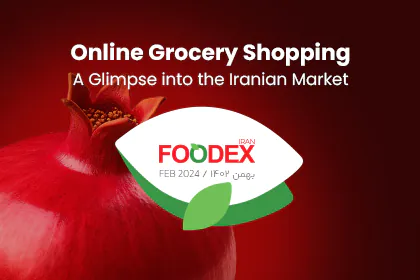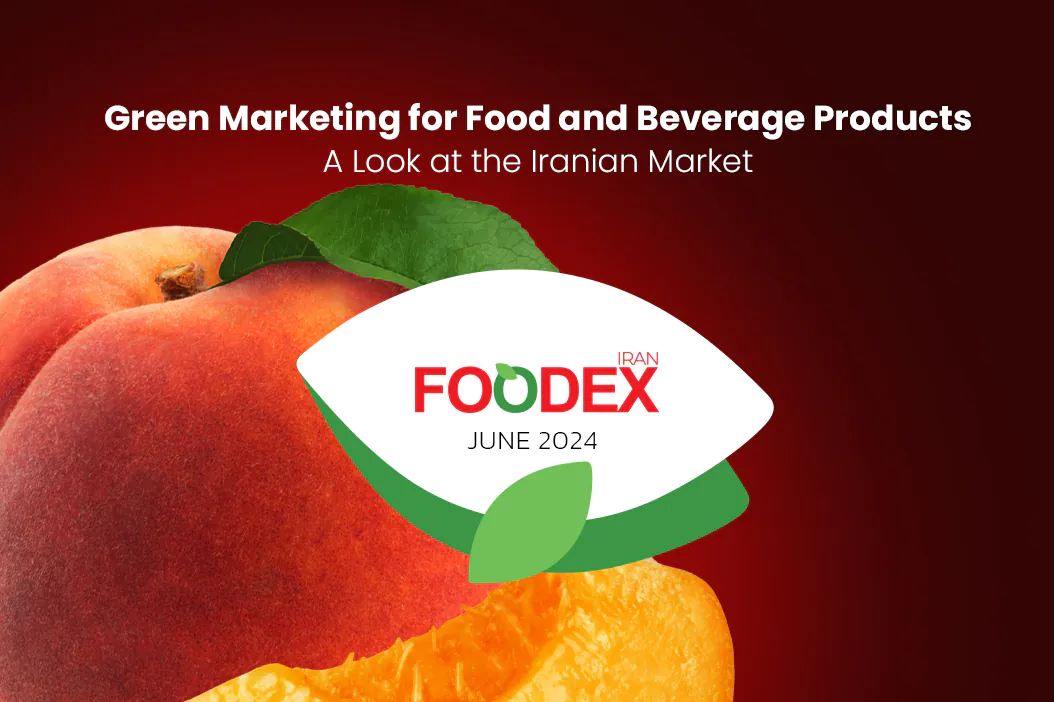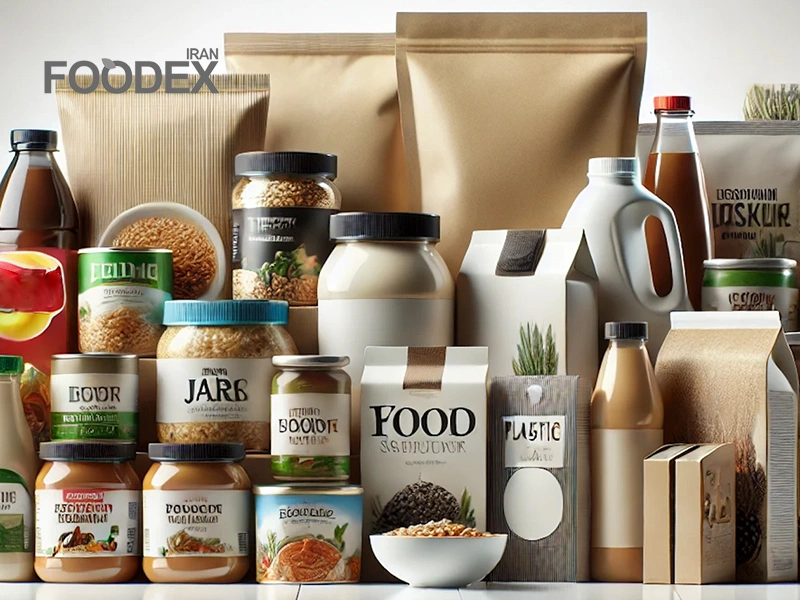Climate and weather conditions depend highly on whether a country can produce particular food and agricultural products. Importing certain products is a necessity for countries that cannot manufacture them. Meanwhile, due to its diverse and favorable climate, countries like Iran can produce enough food and agricultural products to meet their needs and export the surplus to over 40 countries.
This article examines Iranian food products’ export potential, the challenges faced by the industry, and strategies for expanding exports.
So let’s dig into the different food sectors in Iran, the major export destinations for Iranian food products, and the factors contributing to the success of Iranian food product exporters.
Importance of Exports
Exports are crucial to the growth and sustainability of the Iranian economy; they help diversify Iranian income sources, create jobs, and enhance Iran’s international reputation.
Iranian Food Products with High Export Potential
Saffron
Global saffron production is dominated by Iran, which produces over 90%. This lovely spice, known for its unique flavor and numerous nutritional benefits, is highly demanded in the culinary and pharmaceutical industries.
Approximately 120,000 kilograms of Iranian saffron are exported annually, resulting in a significant profit for the country.
Pistachios
Iran is also renowned for its high-quality pistachios, which are popular for their flavor, color, and size. In Iran, Kerman province produces the majority of pistachios. Various cultivars are available for this export commodity, including Kalleh Ghouchi, Fandoghi, Ahmad Aghaei, Akbari, and Badami. Currently, Iran exports pistachios to over 75 countries worldwide.
Germany is Europe’s largest buyer of Iranian pistachios, while Vietnam is the largest importer.
rice
Known for its excellent quality, Iranian rice is a highly sought-after export. The largest producers of Iranian rice are Mazandaran, Gilan, Golestan, and Fars provinces, with a significant portion exported to various countries. By leveraging the credibility of Iranian rice, Iranian rice producers can access global markets through companies like “Gilankesh.”
raisins
There is a high demand for Iranian raisins on the global market, which makes it a popular export commodity. Takestan is the biggest producer of raisins in Iran, exporting around 150 to 160 thousand tons of raisins yearly, including to countries such as Spain, the Netherlands, and the United States.
Dates
There are over 400 varieties of dates grown in Iran. International date demand is rising, providing Iranian exporters with a significant opportunity. Iranian dates are produced in different regions and exported to global markets in various varieties, including Mazafati and Piarom. The amount of dates exported annually is almost 950,000 tons, with major importers including Russia, Malaysia, Indonesia, India, and China.
Caviar
The Caspian Sea’s abundant sturgeon population has made Iran one of the world’s largest caviar producers and exporters. One of the world’s finest caviars is Iranian caviar, harvested from the Caspian Sea. With its high export potential and excellent taste, Iranian caviar is a favorite in the luxury food market.
Gilan province is the largest caviar producer in Iran, and annual caviar production is expected to reach 10 tons, with over 95 percent of it exported.
Dried Fruits and Nuts
Iran’s climate and fertile soil create the perfect conditions for producing various dried fruits and nuts. These products, known for their long shelf life and health benefits, have considerable export potential.
Major export destinations for Iranian food products
Russia
with a large territory, high population, and cold climate, Russia relies heavily on imports. Due to its solid and strategic political ties with Iran, Russia imports Iranian food in large quantities.
Turkey
Turkey is a significant export destination for Iran, with Iranian merchants actively exporting fresh produce, dried fruits, saffron, and pistachios.
China
China’s large population presents a significant market for Iranian food exports. Iran currently exports a considerable volume of food products to China, including fish and various dried fruits such as pistachios, almonds, dates, figs, multiple fruits, honey, chocolates, and more.
United Arab Emirates (UAE)
As one of Iran’s strongest trading partners, the UAE imports a wide variety of agricultural products such as pistachios, saffron, dried fruits, fruits, vegetables, fish, and seafood.
Afghanistan
There are good trade relations between Iran and Afghanistan, with flour and rice, legumes, tea, cereals, vegetables, fruits, and potatoes being among the food products exported to the country.
Germany
The German market is one of the most important markets for Iranian exports, including various fruits, dried fruits, tea, coffee, and vegetables.
Canada
due to its cold weather and long winters, Canada relies on imports of certain food products, including various fruits, dried fruits, grains, and bakery products, including flour, spices, vegetables, root vegetables, and more.
Opportunities for Iranian Food Exports
Growing Global Demand for Ethnic Foods
The increasing interest in ethnic foods and flavors presents a significant opportunity for Iranian food products. By capitalizing on this trend, Iranian exporters can introduce their unique products to a broader audience, increasing their global market share.
Health Benefits of Iranian Food Products
Many Iranian food products are known for their health benefits, such as antioxidant properties, heart health, and diabetes management. This attribute can be leveraged to appeal to health-conscious consumers worldwide.
Unique Flavors and Ingredients
Iranian cuisine is characterized by its unique flavors and ingredients, which can help differentiate Iranian food products from their global competitors. By emphasizing these attributes, Iranian exporters can carve a niche for themselves in the international market.
High-Quality Production Standards
Iranian food products are often produced using traditional methods and high-quality ingredients. By maintaining these production standards, Iranian exporters can ensure that their products continue to be sought after in the global market.
Challenges Facing Iranian Food Exports
Sanctions and Trade Restrictions
International sanctions and trade restrictions pose significant challenges for Iranian food exporters. These barriers limit market access and create uncertainty for both exporters and importers.
Limited International Marketing
Limited international marketing efforts have hindered Iranian food products’ global reach and recognition. To increase exports, Iranian companies must invest in marketing and branding initiatives.
Logistics and Transportation Issues
Inadequate logistics and transportation infrastructure present challenges in exporting perishable food products. Iranian exporters must invest in efficient transportation and cold chain solutions to overcome this hurdle.
Quality Control and Certification Challenges
Strict global standards and certifications for food products can be a barrier for Iranian exporters. Addressing quality control and certification issues is essential to gain international consumers’ trust and ensure access to global markets.
Essential Factors in Food Export
Food exports depend on preservation techniques, packaging, fast transportation, consumer dietary habits, and purchasing power. Packaging should be environmentally suitable, compliant with laws, dynamic, trustworthy, demonstrate identity, and innovative. Perishable foods should be transported in refrigerated trucks or by air.
Final Words
With its wide selection of high-quality, unique products, Iranian food exports have a bright future. For Iranian food exporters to contribute positively to the country’s economic development, it is vital to respond to the challenges and take advantage of the available opportunities.
Iranian food products will continue to grow through strategic partnerships, marketing, and infrastructure development.






















